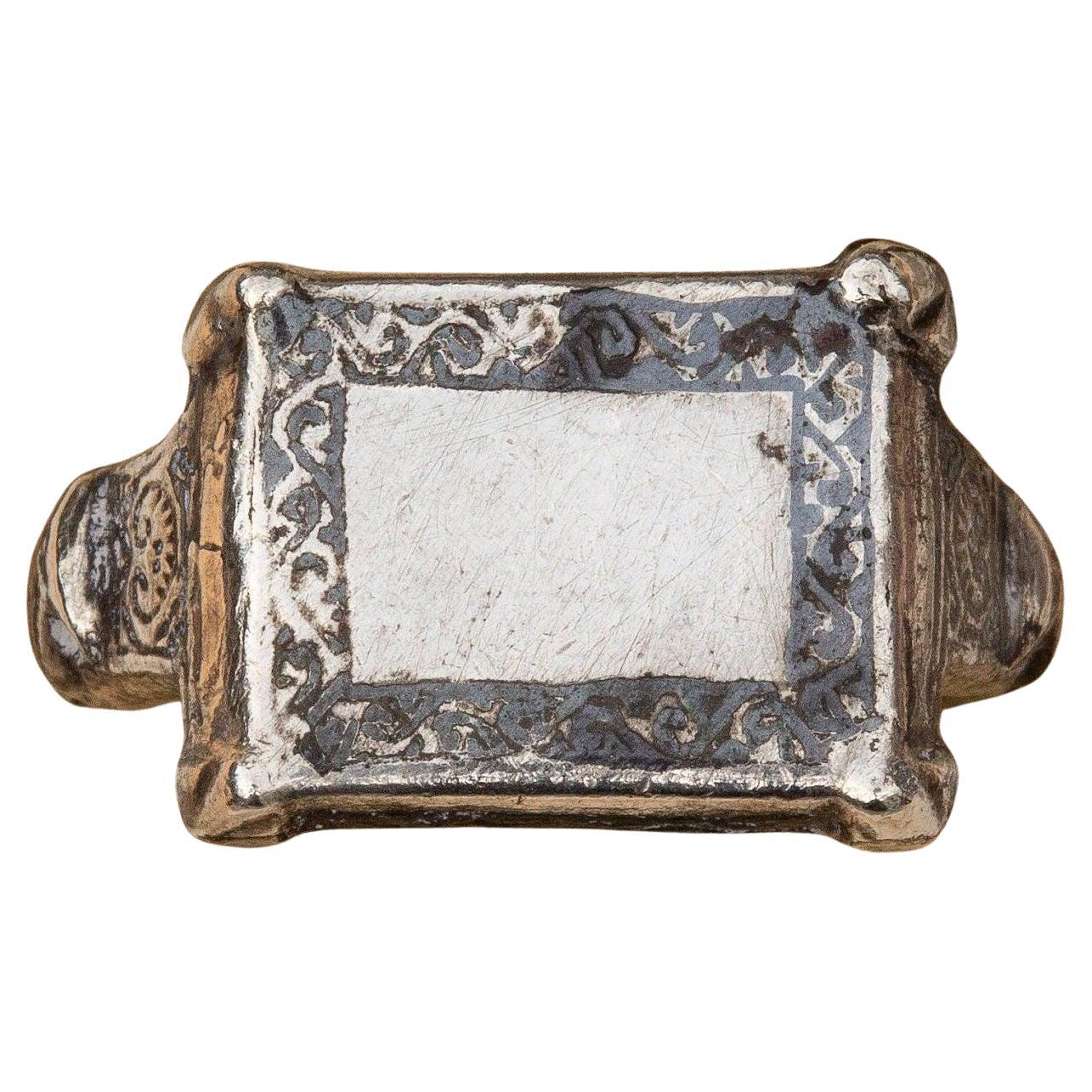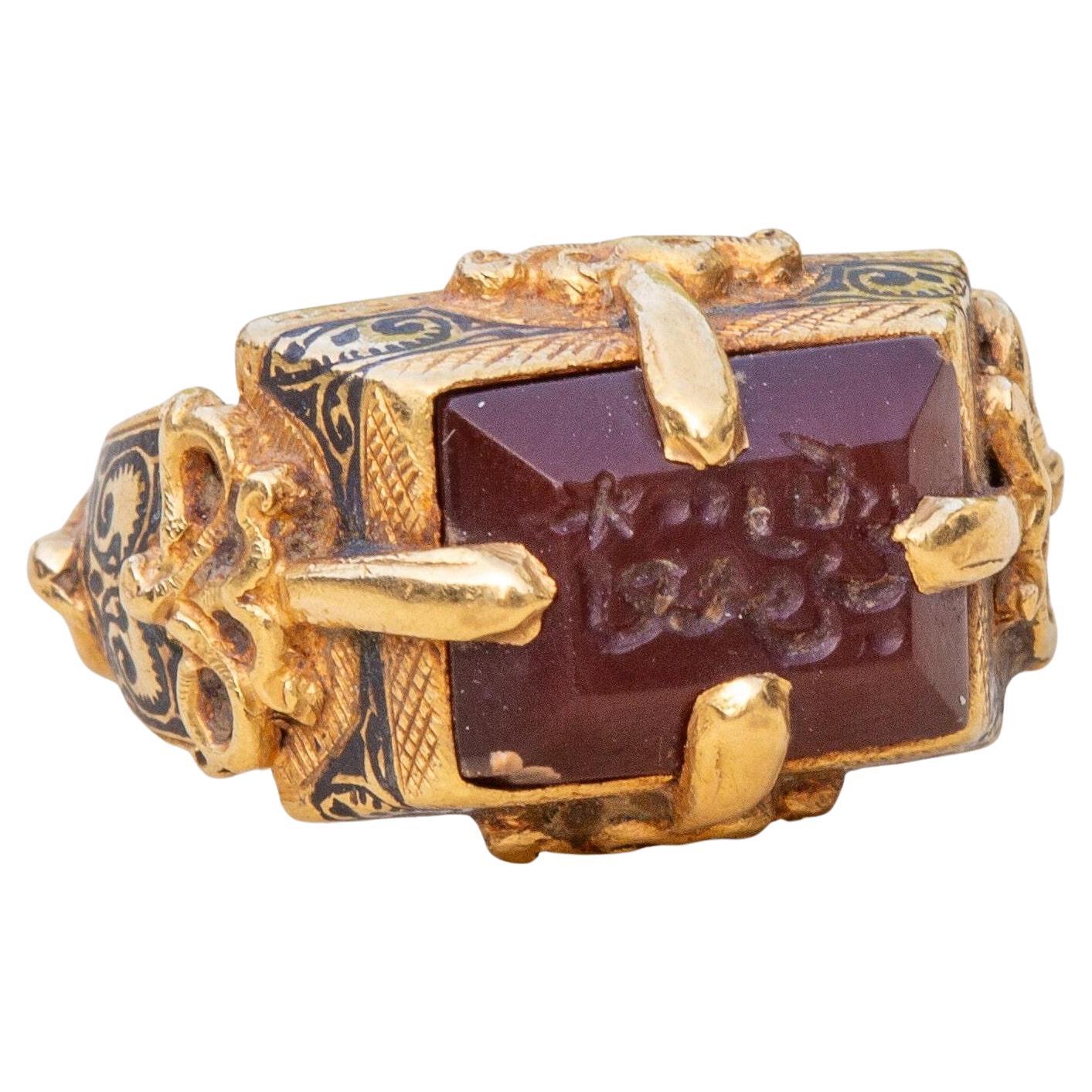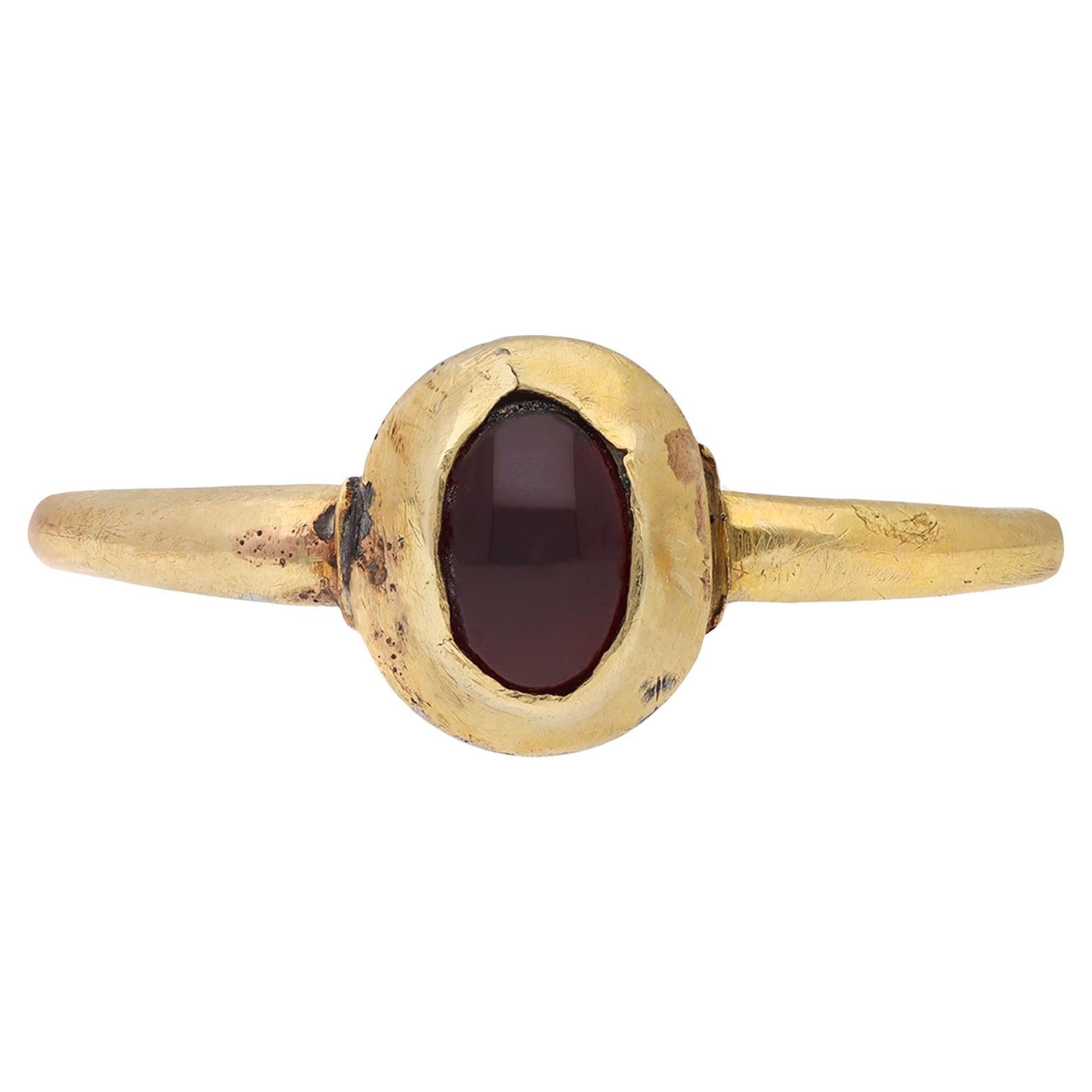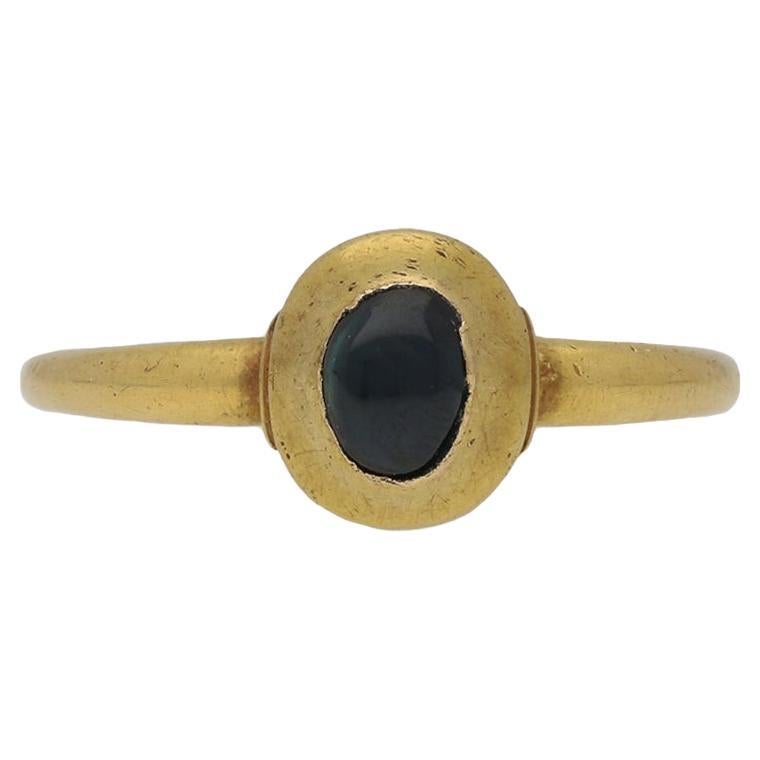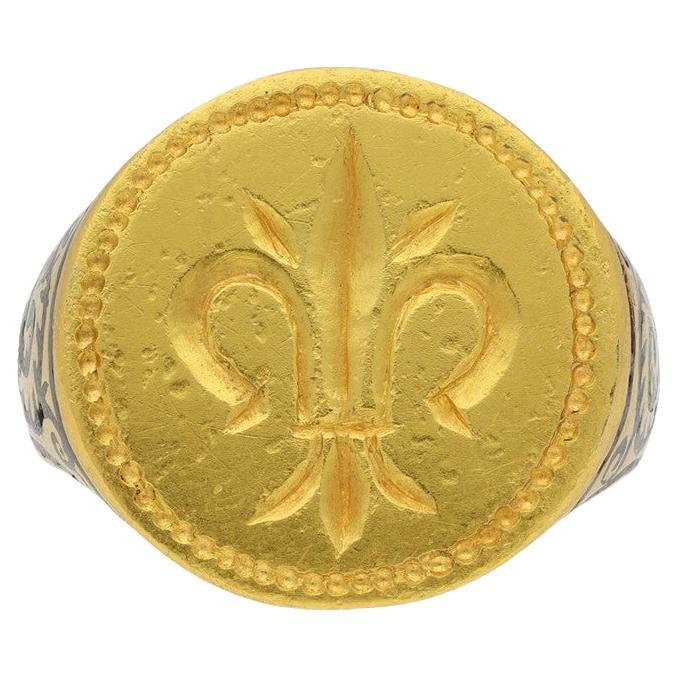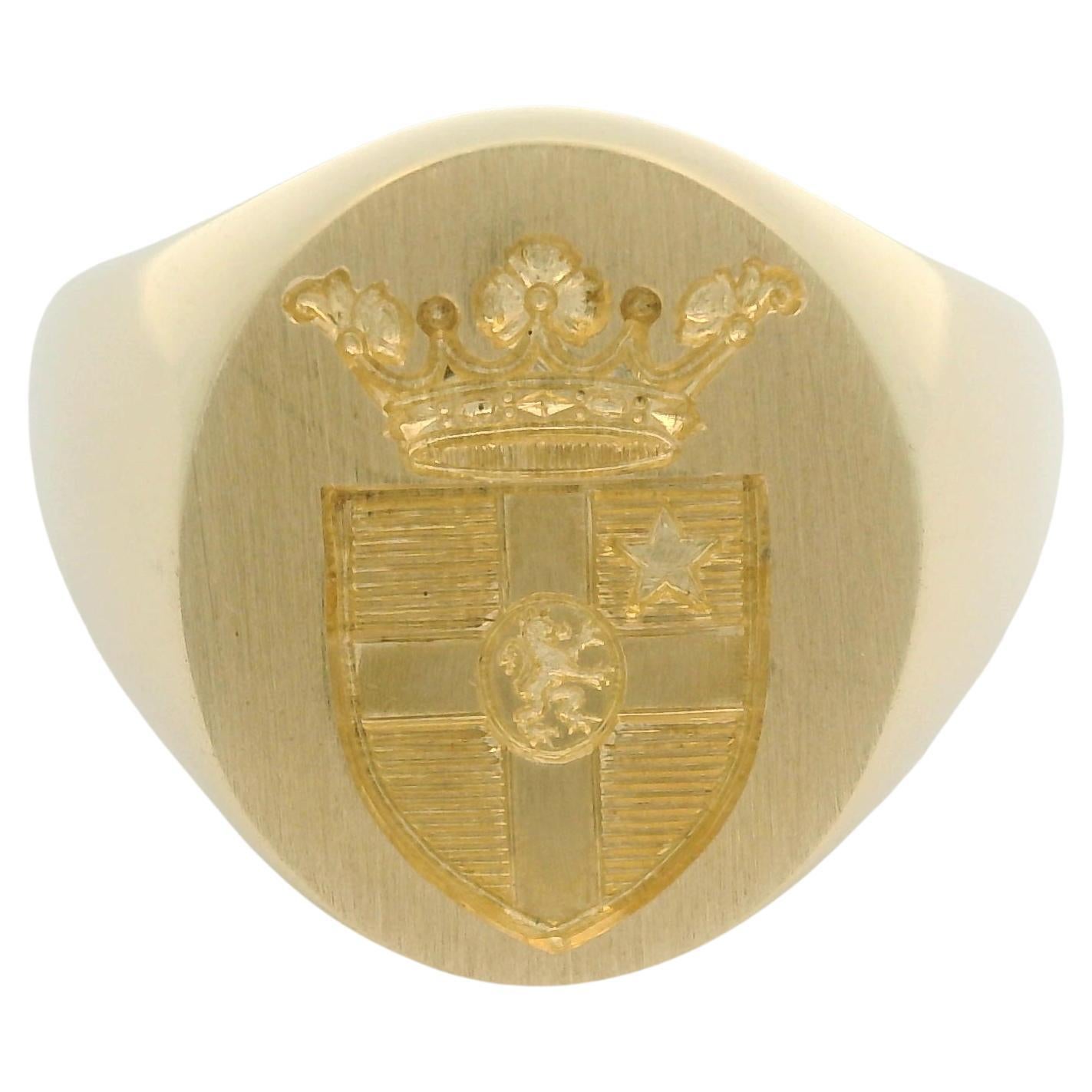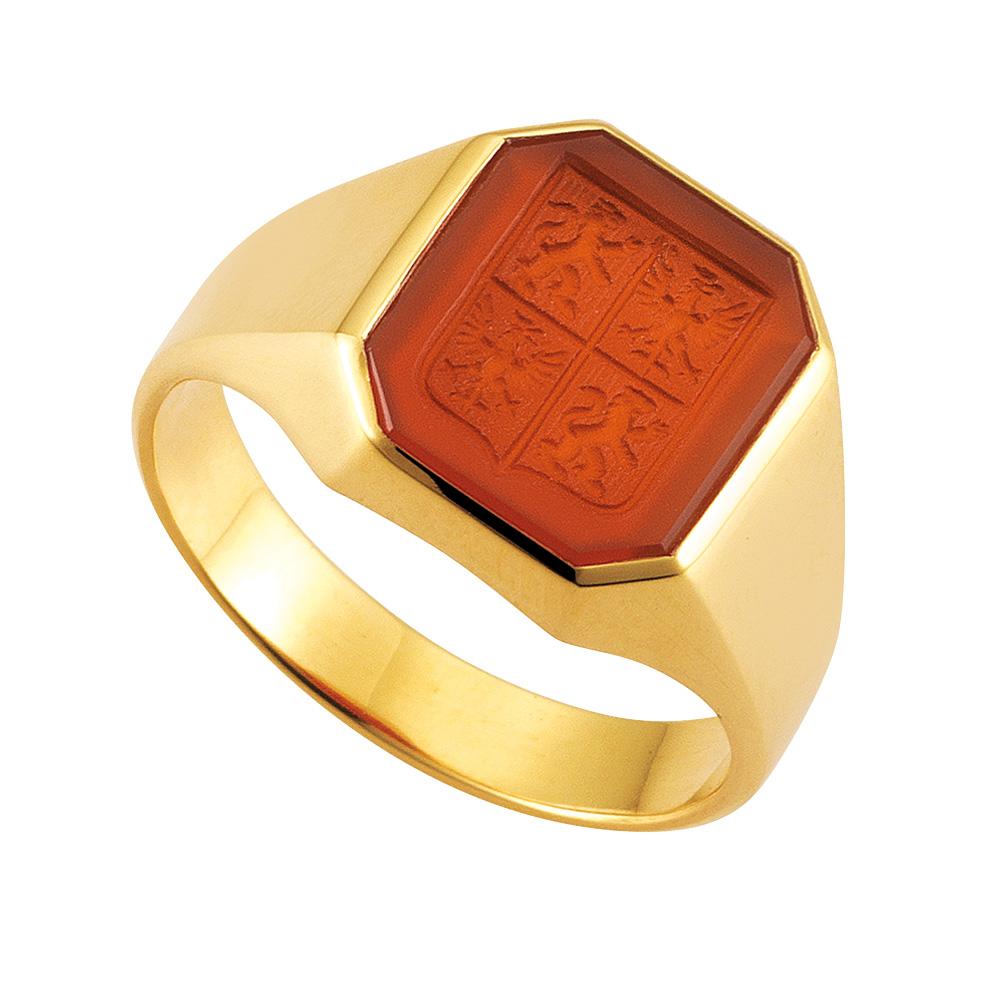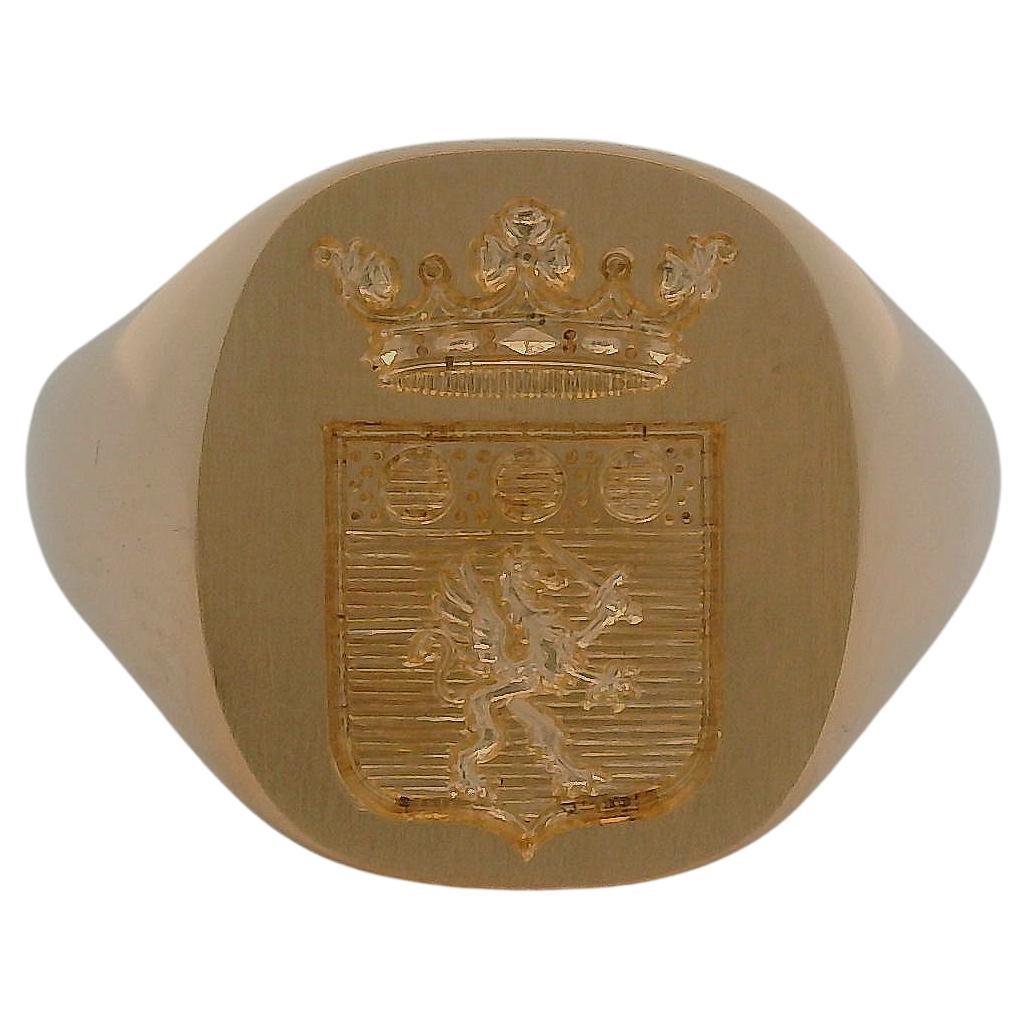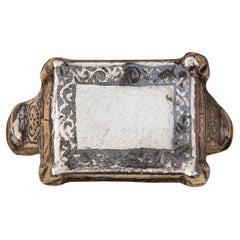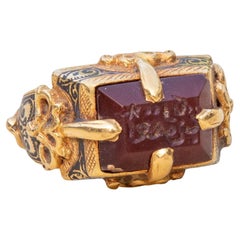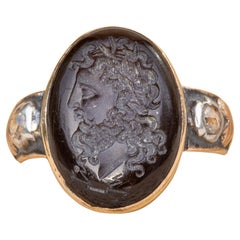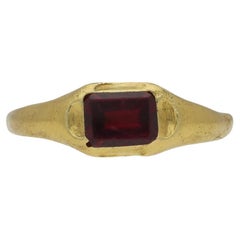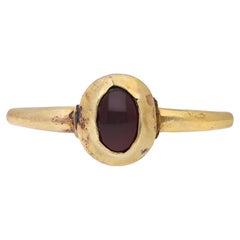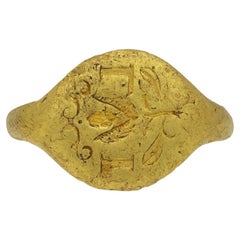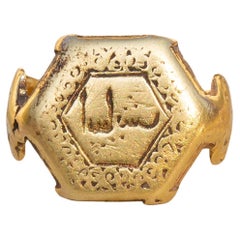
Antique Seljuk ‘Selçuklu’ Period Gold Islamic Medieval Signet Ring 11th-13th C
View Similar Items
Video Loading
Want more images or videos?
Request additional images or videos from the seller
1 of 14
Antique Seljuk ‘Selçuklu’ Period Gold Islamic Medieval Signet Ring 11th-13th C
About the Item
- Ring Size:3.5 US, Resizable
- Metal:
- Weight:7.2 g
- Period:
- Date of Manufacture:1100
- Condition:Wear consistent with age and use.
- Seller Location:London, GB
- Reference Number:1stDibs: LU2845219611802
About the Seller
5.0
Vetted Professional Seller
Every seller passes strict standards for authenticity and reliability
Established in 2019
1stDibs seller since 2022
46 sales on 1stDibs
Typical response time: 1 to 2 days
Authenticity Guarantee
In the unlikely event there’s an issue with an item’s authenticity, contact us within 1 year for a full refund. DetailsMoney-Back Guarantee
If your item is not as described, is damaged in transit, or does not arrive, contact us within 7 days for a full refund. Details24-Hour Cancellation
You have a 24-hour grace period in which to reconsider your purchase, with no questions asked.Vetted Professional Sellers
Our world-class sellers must adhere to strict standards for service and quality, maintaining the integrity of our listings.Price-Match Guarantee
If you find that a seller listed the same item for a lower price elsewhere, we’ll match it.Trusted Global Delivery
Our best-in-class carrier network provides specialized shipping options worldwide, including custom delivery.More From This Seller
View AllAncient Seljuk Dynasty Islamic Nielloed Silver Signet Ring Medieval
Located in London, GB
Very Rare Antique Seljuk ‘Selçuklu’ Period Niello & Silver Islamic Ring
This incredible piece dates to the 11-13th century Seljuk/Seljuq dynasty. The rectangular bezel features an o...
Category
Antique 15th Century and Earlier Engagement Rings
Materials
Silver
Scarce Medieval Gold Garnet Ring Antique 13th Century Talisman Signet Ring
Located in London, GB
An exceptionally rare late 13th century Medieval period gold ring, made either France or England, circa 1280!
This Medieval high-karat gold ring is set with a large 11ct irregular-s...
Category
Antique 15th Century and Earlier European Engagement Rings
Materials
Garnet, 22k Gold
Antique Gold Seljuk 12th Century Ring Carnelian Intaglio Kufic Islamic Signet
Located in London, GB
This incredible, rare gold ring dates from the 12th century Seljuk dynasty. The carnelian intaglio is set within a typical Seljuk tapered rectangular bezel with a four-pronged gold setting soldered to the outside of the bezel. Applied and pierced arabesque designs are placed at the bottom of each prong which also reinforce the joints.
Further applied gold Seljuk ornamentation decorates the band, including two gold birds and a highly decorative vestigial sprued bottom (back-knob) from the casting. The gold mount itself is also ornately and intricately chased and nielloed with arabesque patterns. Remarkably, the niello work remains in exceptional condition, and can still be seen on the underside of the bezel which is decorated with a lattice pattern.
The carnelian intaglio seal is flat cut base with bevelled sides. This shape was predominantly used in the seals from the 8th to 11th century. The seal is engraved with angular Kufic script with forked terminals which dates the seal to the 9th-12th centuries (Porter, 2011).
For similar referenced examples in museums and notable collections, see final photos, in particular item 26 in ‘Islamic Rings and Gems: the Benjamin Zucker Collection’ (1987).
UK size K, US size 5.25
The ring weighs 9.19 grams and is crafted in high-karat gold (21K gold). The carnelian stone measures 11mm x 8mm x 3mm. The hollow box bezel measures 16mm x 10mm and protrudes 7mm from the base.
This museum-grade ring is a rare survivor, most existing examples have some damage to the ring, intaglio or niello - this is a scarce example in superb, original condition.
The Seljuks, a Turkish dynasty of Central Asian nomadic origins, became the new rulers of eastern Islamic lands following the defeat of the powerful Ghaznavids at the Battle of Dandanakan (1040). Under the Seljuk sultanate, which spanned from the 11th to the 13th century, goldsmiths and jewellers created works of unparalleled beauty and sophistication. Seljuk jewellery...
Category
Antique 15th Century and Earlier Engagement Rings
Materials
Carnelian, Gold
18th Century Garnet Intaglio Signet Ring
Located in London, GB
Rare Antique Late 18th Century Garnet Intaglio Signet Ring with Rose Cut Diamonds
This fantastic signet ring dates to around 1780 and was made in Paris. A closed-back and bezel set ...
Category
Antique Late 18th Century Neoclassical Signet Rings
Materials
Diamond, Garnet, 14k Gold, Silver
Antique Gold Cameo Ring Greek Theatre Mask Silenus Hardstone Intaglio Signet
Located in London, GB
A very unusual antique gold ring set with a carved brown and white hardstone cameo depicting the theatrical comic mask of Silenus, the Greek mythological old rustic god of wine-making and drunkenness. The ring was made in the late 19th century and carries French control marks for 18K gold, whilst the cameo is probably Italian and made slightly earlier, circa 1800.
Silenus was a companion to the wine god Dionysus, and suitably he was a notorious consumer of wine, usually drunk and supported by satyrs or carried by a donkey. Silenus was described as the oldest, wisest and most drunken of the followers of Dionysus, and was said to possess special knowledge and the power of prophecy when intoxicated. He presides over the other satyrs and is related to musical creativity, prophetic ecstasy, drunken joy and drunken dances.
Silenus was usually depicted as a jovial old man, bald yet bearded, with a pot-belly, thick lips and snub-nose. The masks worn to play him in theatre really emphasised these features, as you can see with this cameo carving
Theatre was a key part of ancient Greek culture. The theatrical masks worn by the actors, known as ‘prosopon’, served various purposes. They enabled individual actors to play multiple roles (or genders) in the same performance; the exaggerated expressions helped define the character being portrayed; they helped spectators in the back rows to tell the characters apart. This particular masked as mentioned before is a comedic Silenus, please see final photo for other examples of Silenus masks in museum collections.
UK size N 1/2, US size 7
4.84g 18K gold
French ‘tête...
Category
Antique Early 19th Century Italian Georgian Signet Rings
Materials
Agate, 18k Gold
Ancient Roman Gold Mens Signet Ring Conical Intaglio Ring Gem Carving
Located in London, GB
A superb ancient Roman agate intaglio ring. The high-karat gold signet ring is set with an engraved gemstone, known as an ‘intaglio’. It dates from between the 2nd to 3rd century AD and is a fine example of a Romano-British intaglio.
The conical-shaped agate gemstone displays various bands of colour ranging from honey brown to greyish-blue. The engraving depicts the bust of a man wearing a helmet, possibly winged which would depict Mercury, the Roman god of commerce, financial gain and communication. In Roman times, people would wear rings with the intaglio of Mercury in hope that the he would protect them and bless them with good financial fortune in their lives.
A number of referenced examples of similar ancient Roman conical shaped intaglios reside in notable museums all across the world, from the British Museum to the Louvre. A page with these examples and their sources can be found in the final photos of the listing. Similar examples can also be found in the extensive Alice and Louis Koch collection (items: 234, 235, 241, 301). Again see final images for reference.
The gold ring mount is of D-shaped cross-section and a hollow 22K gold construction. The ring has a fantastic smooth silk-like texture when worn. It remains in good overall condition and the intaglio is very secure in the mount. The gold mount dates to the late 18th to early 19th century, and the shape is inspired by ancient Roman ring...
Category
Antique 15th Century and Earlier Signet Rings
Materials
Agate, 22k Gold
You May Also Like
Medieval Iconographic Ring, circa 13th-15th Century
Located in London, GB
Medieval iconographic ring. The central heart shaped bezel engraved with 'IHS' (a Christogram abbreviating Jesus Christ), with smoothly integrated tr...
Category
Antique 15th Century and Earlier Medieval Signet Rings
Materials
18k Gold
Medieval Garnet Gold Ring, circa 13th-15th Century
Located in London, GB
Medieval garnet gold ring. Set with a rectangular faceted garnet in a closed back rubover setting, to a scalloped quatrefoil bezel, the smoothly integrated shoulders leading through ...
Category
Antique 15th Century and Earlier Unknown More Rings
Materials
Garnet, Gold
'Bossingham' Medieval Garnet ring, circa 13th century.
Located in London, GB
'Bossingham' Medieval garnet ring. Set to centre with a oval cabochon natural garnet in a closed back rubover setting with an approximate weight o...
Category
Antique 15th Century and Earlier Medieval Solitaire Rings
Materials
Garnet, Gold
Post Medieval Signet Ring, circa 16th-17th Century
Located in London, GB
Post Medieval signet ring. Composed of an oval plaque featuring a finely engraved image of a thistle with stalk and leaves, the initials 'LI' in engraved...
Category
Antique 16th Century Medieval Signet Rings
Materials
Yellow Gold
Medieval Cabochon Sapphire Ring, circa 13th-14th Century
Located in London, GB
Medieval cabochon sapphire ring. Centrally set with an oval cabochon natural unenhanced sapphire in a closed back rubover setting with an approximate...
Category
Antique 15th Century and Earlier Unknown Medieval Solitaire Rings
Materials
Sapphire, Yellow Gold
Post Medieval Gold Fleur-de-Lis Signet Ring, circa 17th Century AD
Located in London, GB
Post Medieval gold fleur-de-lis signet ring. A heavy yellow gold signet ring, the central circular plaque engraved with a prominent fleur-de-lis motif and framed by incised beaded ed...
Category
Antique 17th Century Unknown Signet Rings
Materials
Yellow Gold
Recently Viewed
View AllMore Ways To Browse
Rolex Azzurro Blue Dial
Rolex Bezel Protector
Rolex Blue Wave Dial
Rolex Bluesy Submariner
Rolex Bombay
Rolex Box Sleeve
Rolex Bruce Wayne
Rolex Bubbleback Ref 2940
Rolex Calibre 3155
Rolex Cameleon
Rolex Cellini 1601
Rolex Cellini 1950
Rolex Cellini 1974
Rolex Cellini 2001
Rolex Cellini 4112
Rolex Cellini 5115 9
Rolex Cellini 6621
Rolex Cellini 6623
